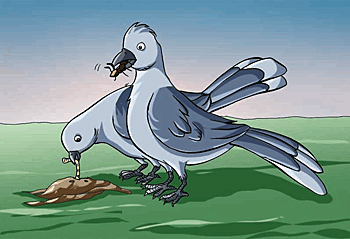insecto-, insect-, insecti- +
(Latin: a bug; literally, "cut into," from insectum, with a notched or divided body; literally, "that which is cut up, segmented" [as the bodies of the first invertebrates to which the term was applied or appeared to be])
2. An organism that feeds mainly on insects.
Although individually small, insects exist in enormous numbers and make up a very large part of the animal biomass in almost all non-marine environments.
In Queensland, Australia, pastures; for example, it is normal to have a greater total weight of Scarabaeidae larvae under the surface of the ground than of the beef cattle grazing above it.
A great many creatures depend on insects as their primary diet, and many that do not (and are thus not technically insectivores) nevertheless use insects as a protein supplement, particularly when they are breeding.
2. An animal or plant that eats insects.
Plants that have specialized leaves or leaf parts capable of trapping and digesting insects; such as, the Venus's flytrap, the pitcher plants, and the sundews.

Insectivorous bat populations adversely impacted by white-nose syndrome (WSN) and wind turbines, may be worth billions of dollars to North American agriculture.
This study often includes the study of other terrestrial arthropods; such as, spiders, scorpions, and ticks.
![]() An entomological unit of words about insects.
An entomological unit of words about insects.
A cross reference of other word family units that are related directly, or indirectly, with: "insects, bugs, worms; invertebrates": aphidi-; api-; ascari-; culci-; Dung Beetle Survival; Dung Beetles Important; Eating Worms; entomo-; formic-; Guinea worms; helmintho-; Insects: Importance; isopter-; larvi-; lepidopter-; meliss-; mosquito; Mosquito, other Languages; Mosquitoes, Pt. 1; Mosquitoes, Pt. 2; myrmeco-; scarab; scoleco-; sphec-; taeni-; termit-; vermo-.

